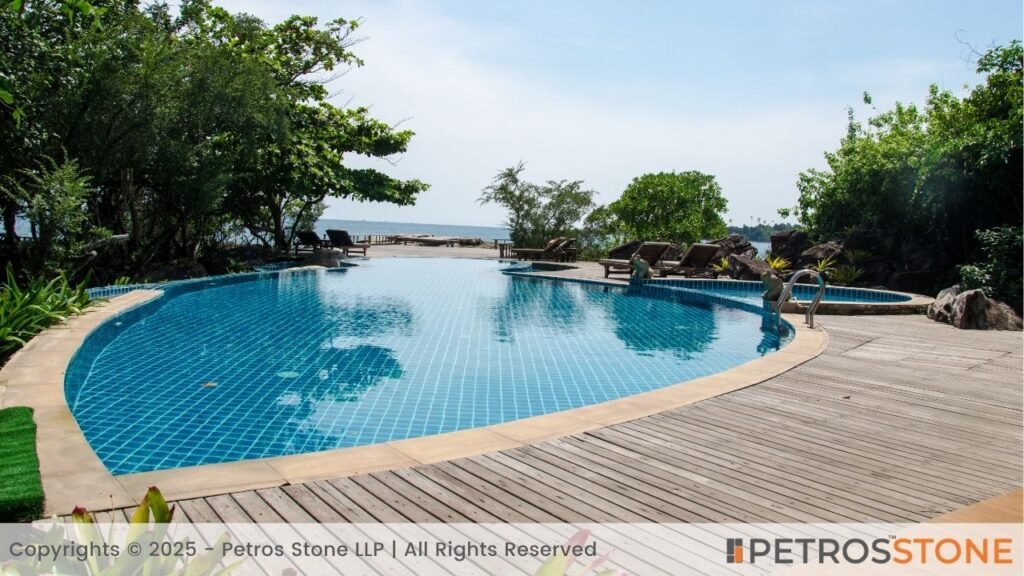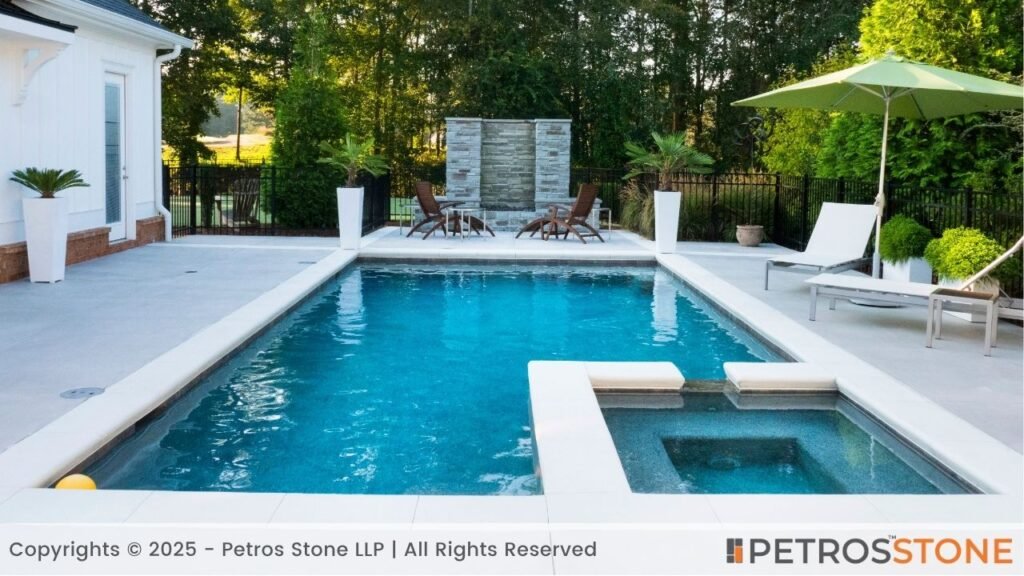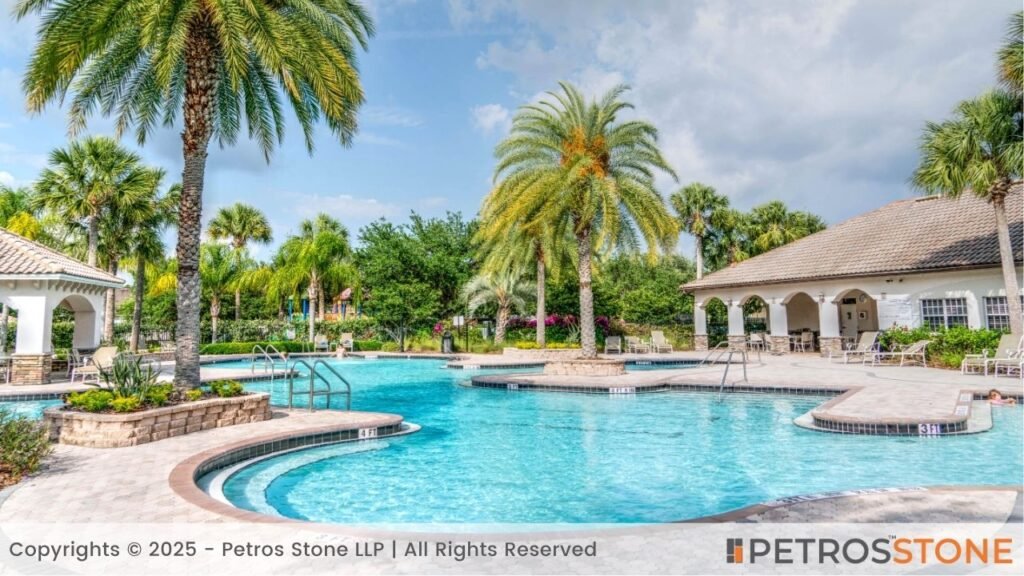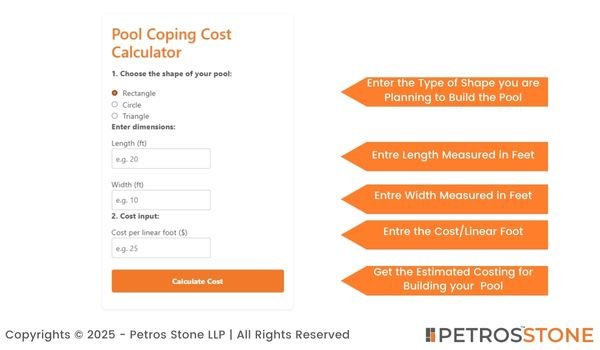Pool Coping Cost Calculator – Estimate Your Pool Edge Price Instantly
Pool Coping Cost Calculator
1. Choose the shape of your pool:
Enter dimensions:
Enter diameter:
Enter side length:
2. Cost input:
Pool Coping Estimator
This tool helps you estimate the total cost of pool coping—whether you’re using natural stone, precast concrete, or custom pavers—by calculating the perimeter of your pool and multiplying it by your chosen material’s price per linear foot.
A beautiful pool coping finish ties together water, decking, and landscaping—yet coping materials and installation can take a big bite out of your budget. Before you call fabricators or masons for quotes, use our Pool Coping Cost Calculator to get an instant, ballpark estimate based on your pool’s shape, size, and preferred material price.
Why Estimate Pool Coping Cost?
Setting Realistic Budgets
Avoid sticker shock. Whether you dream of sleek granite edgings or affordable precast coping stones, an early cost check helps align your design vision with what you can actually afford.
Setting Realistic Budgets
Is natural limestone twice as expensive as concrete? Should you choose bullnose pavers over square-edge coping? Quickly swap price-per-foot values to see which option fits your budget.
Streamlining Design Decisions
Perhaps you’ll opt for a more premium material around a small spa area and a budget-friendly finish elsewhere. Having approximate numbers up front guides smarter layout choices.



What This Tool Does
Shape & Perimeter Calculation
Rectangle: Enter length and width to compute
2 × (L + W)Circle: Enter diameter to compute
π × DTriangle (equilateral): Enter one side to compute
3 × S
Cost Estimate
- Multiply the calculated perimeter (in feet) by your material’s cost per linear foot.
Understanding the Inputs

1: Pool Shape
Pick Rectangle, Circle, or Triangle.
Step 2: Dimensions
Provide length/width (ft), diameter (ft), or side length (ft).
Step 3: Cost per Linear Foot ($)
Enter your chosen material price (e.g., natural stone at $45/ft or precast at $15/ft).
Once you’ve filled in these fields, hit Calculate Cost for an instant estimate.
What This Tool Does Not Calculate
Removal & Preparation: Demo of existing coping, deck teardown, or substrate prep costs.
Labor Variations: Installer rates differ by region, complexity, and edge profiles.
Waste & Overages: Cutting irregular shapes may generate scrap that you still pay for.
Permits & Taxes: Local permit fees, sales tax, or environmental surcharges.
Use this as a quick budgeting guide, not a final quote—always confirm with local contractors.
Conclusion
Our Pool Coping Cost Calculator is a fast, user-friendly way to gauge your project’s material expense before you pick up the phone. Make informed decisions, avoid surprises, and keep your pool renovation on track.
Disclaimer: This estimate covers perimeter material cost only. For detailed labor, removal, and finishing quotes, consult a professional installer.
Once you’ve used the Pool Coping Cost Calculator to zero-in on your estimated material expense, the experts at Petros® Stone are ready to take the next step with you. Whether you prefer elegant natural stone, precision-cut precast coping, or custom pavers, we’ll guide you through material selection, edge profiles, and installation options—all at competitive rates.
Ready for a bespoke quote?
Request Your Free Detailed Quote tailored to your exact pool dimensions and finish preferences.
Chat on WhatsApp for real-time guidance, samples, and pricing.
Don’t let pool coping costs remain uncertain—partner with Petros® Stone for clarity, quality, and craftsmanship every step of the way!
FAQs
How accurate is this calculator?
It provides an approximate material cost based on perfect geometry; real-world jobs may incur additional labor, waste, and permit fees.
Can I use it for Custom Pavers or Precast Concrete?
Yes—just enter the correct cost per linear foot for whichever coping material you prefer.
Does it Handle Non-Standard Shapes?
Currently it supports rectangles, circles, and equilateral triangles. For irregular pools, approximate by dividing your shape into these sections.
What Units Does it Use?
All dimensions are in feet, and output is in U.S. dollars per linear foot.
